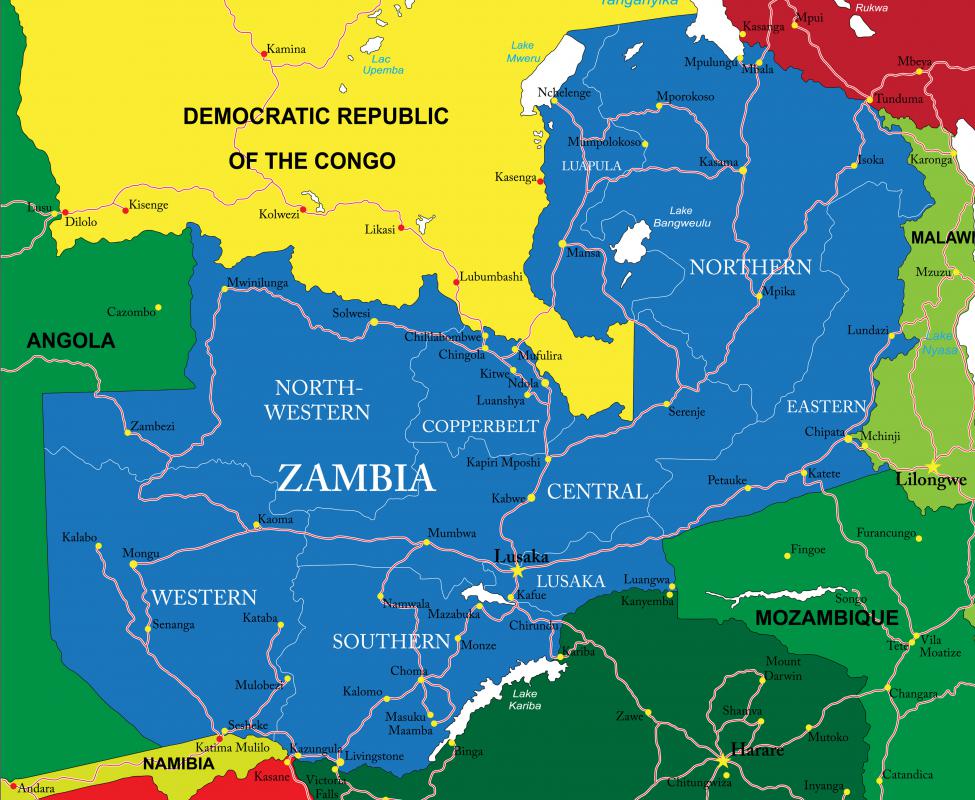At AllThingsNature, we're committed to delivering accurate, trustworthy information. Our expert-authored content is rigorously fact-checked and sourced from credible authorities. Discover how we uphold the highest standards in providing you with reliable knowledge.
What are Puku?
Puku are antelope found in parts of Congo and Zambia in Africa. These stocky antelope are sometimes a bit less graceful than their more famous kin, but they are still quite lovely. People who want to see puku in person can organize safari trips to Africa, where they will see an assortment of wildlife, or they can visit a local zoo, if they want something a bit closer to home.
Adult puku are around three feet (one meter) tall at the shoulder, with sandy brown coats which lighten to creamy brown on their underbellies. They have dark markings on their faces and around their ears, and the males have curved, ridged horns like their relatives the impalas. Puku are very muscular, with bodies which are designed for rapid running in the event that they encounter predators.

Most puku prefer wet grassland, although they will tolerate open woodlands and bush. They roam in social herds of 20-50 individuals, with herds growing larger in the dry season, when the animals sometimes join forces for protection. Each herd is overseen by a single male, who typically tries to encourage females to remain within his territory. These antelope can live to be around 17 years old, and sometimes even older in captivity.

Female puku have an eight month gestation period, and they wean their young after about six months. After around a year, the young puku are sexually mature; the animals breed year round, although breeding tends to be concentrated in the rainy season, when resources are plentiful. In social groups, puku use a distinctive shrill whistle to indicate dangers to the herd.
Puku share their Central-Southern African habitat with a variety of other African animals who also enjoy the floodplains and valleys of their home. These animals include other antelope species along with predators like hyenas and African wildcats.
These animals are formally known as Kobus vardonii. Their conservation status is generally viewed as secure, although some biologists are concerned about habitat encroachment. Puku are also threatened by fencing of farmlands, game preserves, and territories, which is sometimes done to protect wild animals from poachers or farmers who are upset about animal damage to their crops. Along with other antelope, puku are treated as game animals; game farms outside of Africa occasionally import puku for people who wish to pursue them.
Frequently Asked Questions
What is a Puku?
A Puku is a medium-sized antelope found in wet grasslands and floodplains of sub-Saharan Africa. They are known for their golden-yellow to reddish-brown coat and the males' distinctive, lyre-shaped horns. Puku are social creatures, often seen in herds, and are a favorite prey for predators like lions and leopards.
Where can Puku be found in the wild?
Puku are primarily located in the savannas and floodplains of Eastern and Southern Africa. Their range extends from the Democratic Republic of Congo to Tanzania, with significant populations in the wetlands of Zambia's Kafue National Park. They thrive in areas with abundant water and lush grasses for grazing.
What do Puku eat?
Puku are herbivores with a diet consisting mainly of grasses. They have a preference for short, green grass, which they graze on in the early morning and late afternoon. During the dry season, they may also consume herbs and leaves to supplement their diet, ensuring they get the necessary nutrients.
How do Puku behave in their habitat?
Puku exhibit a diurnal lifestyle, being most active during the cooler parts of the day. They form herds that can number up to 20 individuals, although larger groups are common in areas with abundant resources. Puku communicate through vocalizations and are known to be quite vocal when alarmed or to maintain herd cohesion.
Are Puku endangered?
As of my knowledge cutoff in 2023, Puku are classified as 'Least Concern' by the International Union for Conservation of Nature (IUCN). However, they face threats from habitat loss and hunting. Conservation efforts focus on protecting their wetland habitats and regulating hunting to ensure their populations remain stable.
How do Puku reproduce, and what is their lifespan?
Puku reach sexual maturity at about two years of age. Breeding can occur year-round, but it often peaks during the rainy season. After a gestation period of approximately eight months, a single calf is born. In the wild, Puku have a lifespan of up to 15 years, though this can be shorter due to predation and environmental pressures.
AS FEATURED ON:
AS FEATURED ON:












Discussion Comments
Most of the world's puku antelope actually live in Tanzania (around 75-80 percent of the total in the south of Tanzania in the Kilobero Valley).
Post your comments